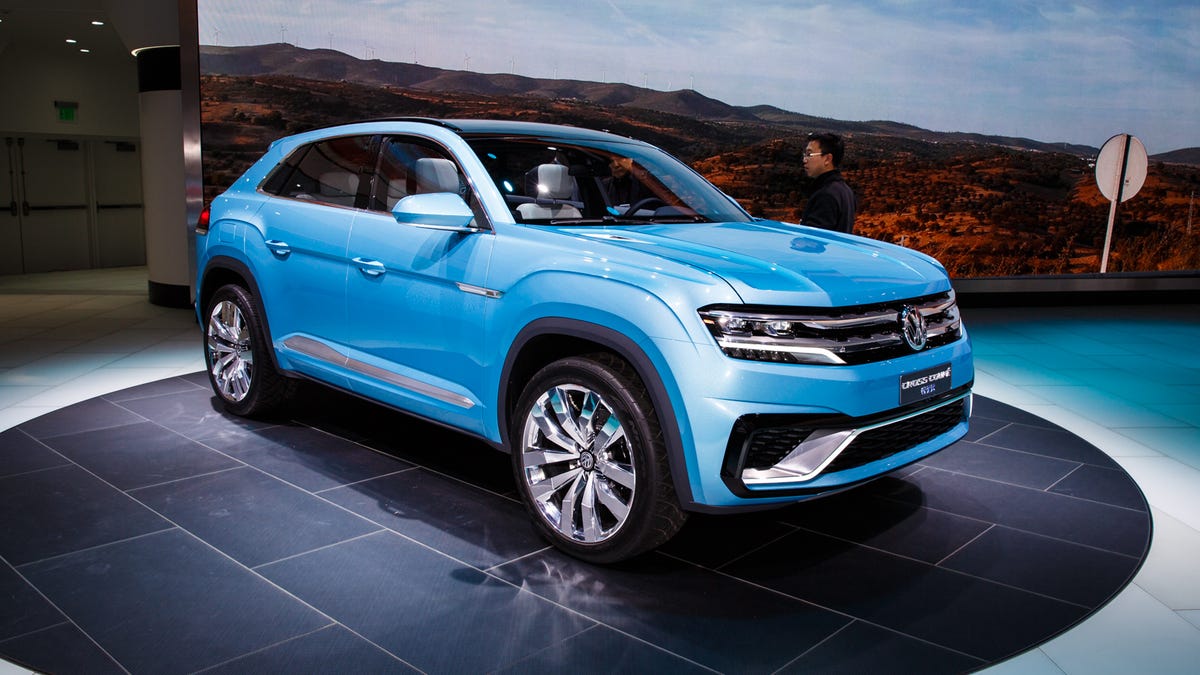
DETROIT -- Volkswagen has shown off variations of this medium-sized SUV concept over the last couple of years, calling it everything from the CrossBlue to the Cross Coupe TDI. The latest incarnation, on show here, uses the name Cross Coupe GTE, the last three letters evoking the same sort of hybrid drivetrain performance we saw in the Golf GTE.
Under the hood sits a 3.6-liter V-6 direct injection engine, good for 276 horsepower and 258 pound-feet of torque, driving the front wheels. The transmission integrates an electric motor-generator, and another electric motor drives the rear wheels, giving the Cross Coupe GTE four-wheel-drive.
Volkswagen notes that the aggressive front-end design of the Cross Coupe GTE will be used in a new seven-seat SUV for the US.
This Cross Coupe GTE concept holds five passengers, and gains its coupe name from the raked rear pillars.
The Cross Coupe includes four drive modes. GTE offers sporty onroad performance, while Off-road ensures that all four wheels are driven. E-mode powers the car with electricity for its stated range of about 20 miles. Battery hold/charge lets the driver either maintain the current battery level or have the engine charge the battery.
A 14.1 kilowatt-hour lithium-ion battery pack powers the rear motor, and can be charged through the car's plug-in port. That port also includes a 110-volt AC outlet.
As a concept the Cross Coupe GTE incorporates a futuristic cabin design, but the features on the dashboard are all in development by Volkswagen.
As part of Volkswagen's performance intention for the Cross Coupe GTE, this concept gets a sporty flat-bottom steering wheel.
An LCD panel for the instrument cluster gives Volkswagen flexibility for what information it shows, especially useful considering the different drive modes and hybrid drivetrain.
As an advancement over the previous Cross concepts from Volkswagen, the Cross Coupe GTE gets a similar gesture-controlled cabin tech interface to what we saw at CES on the Golf R Touch concept.
The Cross Coupe GTE uses a bench for the rear seat, although the seven-seat SUV promised for the US will use a different configuration.
Tablets mounted on the headrests look similar to the Android-based tablets that Audi developed for its cars. These tablets are closely integrated with the car, letting rear seat passengers control entertainment, load destinations into navigation and view vehicle running data.

